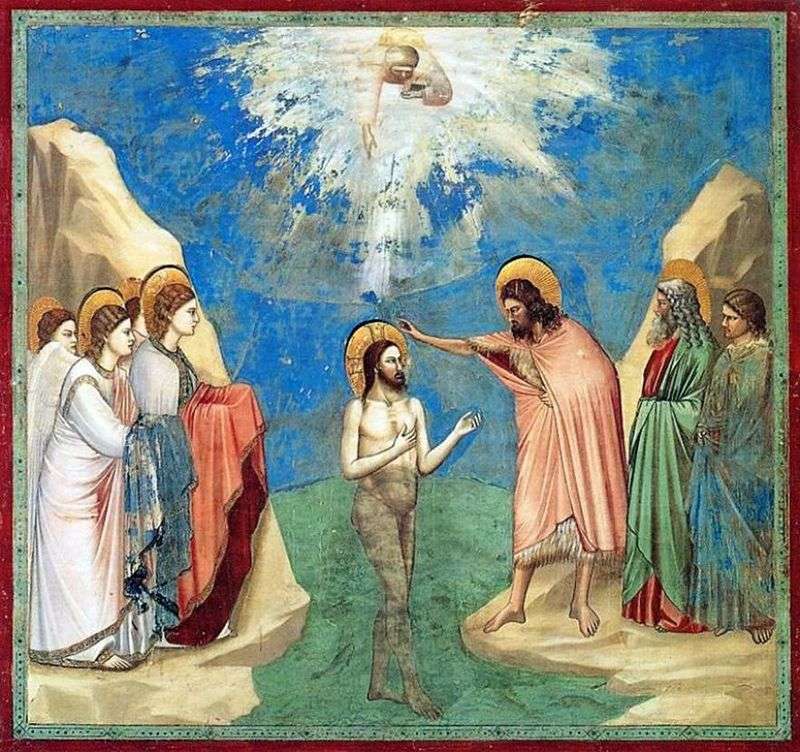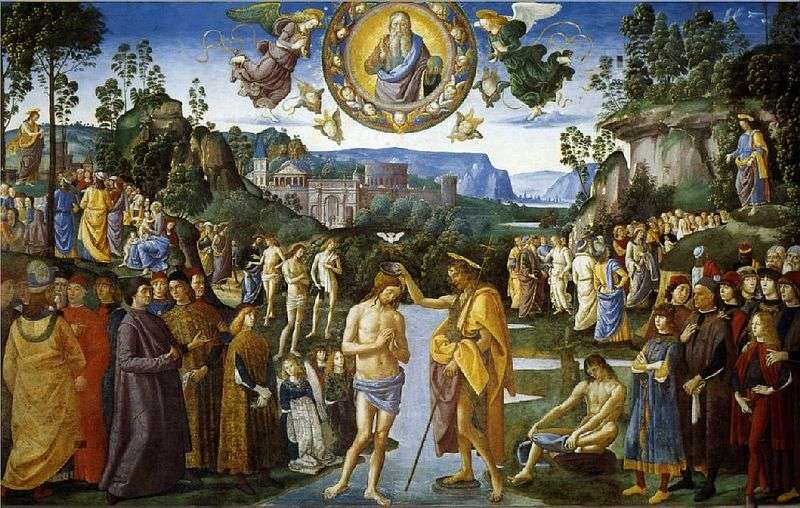
This scene from the cycle of fresco paintings of the Capilla del Arena confirms the established view that the principles of the visual stylistics of Giotto, generally designed to provide the maximum likelihood of the image of what is happening, the weakest manifest themselves in scenes that are subject to the unshakable norms of canonical iconography.
It is enough to look at the figure of Christ, hidden on the waist by water: it is shown as if outside the laws of optical refraction of the lines of a submerged object. On the other hand, Giotto, who was extremely sharp-sighted, here as if purposely “does not notice” the discrepancy between the surface of the stream and the shore line, which, with such a rise in the water level, would inevitably be flooded.
However, in this scene, you can note the signs of a unique Djottian manner, in particular, the ability in all situations to highlight in the depicted the main thing in meaning. The contours of two symmetrically arranged rocks on the second plane, whose lines are additionally highlighted by contrasting their light surface with a dark background, lead our eyes to the figure of Jesus Christ in the center of the composition. His dominant position is also emphasized by the fact that the views of all the participants in the sacrament are directed to him, and the smooth surface of the water serves as a kind of optical pause separating Christ and the other characters of the scene.
 Marriage in Cana of Galilee by Giotto
Marriage in Cana of Galilee by Giotto The expulsion of merchants from the temple by Giotto
The expulsion of merchants from the temple by Giotto Baptême du Christ – Giotto
Baptême du Christ – Giotto Lamentation of Christ by Giotto
Lamentation of Christ by Giotto Escape to Egypt by Giotto
Escape to Egypt by Giotto Fresco Baptism of Christ by Pietro Perugino
Fresco Baptism of Christ by Pietro Perugino Muerte de San Francisco – Giotto
Muerte de San Francisco – Giotto Crucifixion (Capella del Arena) by Giotto
Crucifixion (Capella del Arena) by Giotto